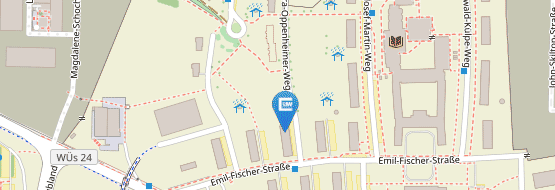Eco-Evo Molecular Tool Development
Summary
Biodiversity research on a molecular level has reached a new height with the advent of affordable sequencing methods, especially with next-generation devices. Sequencing data provides information about the evolutionary history, allows identification of all organisms within a community through meta-barcoding and uncovers not only species but also genetic diversity through genomics. Furthermore, such data is of high taxonomic resolution, independent of previous knowledge of taxa, well-comparable between workgroups, long-term achievable and re-usable in meta-analyses. Yet, currently molecular and bioinformatic tools are missing to generate and process such data in the ecological context. We thus engage into the method development of tools for:
- Resolving the evolutionary background through phylogenetics and -genomics (GSLS 405/ 1517)
- Assessing eukaryote diversity through meta-barcoding (GSLS 405/1517)
- Linking taxonomic sequencing data to genomic and phenotypic traits (GSLS 405/1517)
Project Details
For next-generation sequencing based approaches, most current methods target microbial organisms. It becomes however more and more apparent that such methods are applicable and beneficial also in the investigation of other taxa beyond the microbial world. My workgroup has performed pioneering work in meta-barcoding with eukaryotes. We have developed laboratory methods and bioinformatic strategies to assess the diversity of pollen from bee collections (and other plants) using next-generation sequencing devices without the need for manual separation or light microscopy.
While next-generation sequencing is already a great win for ecologists, it also has it's downsides. The data needs bioinformatical processing and most algorithms currently available are dedicated to genomics and transcriptomics. Our workgroup is thus developing bioinformatic tools to analyse molecular and community data, as e.g. whole-genome based tree builder or to map genomic and trait data to ecological communities.
Publications
-
FENNEC - Functional Exploration of Natural Networks and Ecological Communities. . In Methods in Ecology and Evolution, bll 2028–2033. 2018.
-
Pollen DNA barcoding: current applications and future prospects. . In Genome, 59, bll 629–640. 2016.
-
biojs-io-biom, a {BioJS} component for handling data in Biological Observation Matrix ({BIOM}) format. . In F1000Research, 5, bl 2348. F1000 Research, Ltd., 2016.
-
bcgTree: automatized phylogenetic tree building from bacterial core genomes. . In Genome, 59, bll 783–791. 2016.
-
ITS2 Database V: Twice as Much. . In Molecular Biology and Evolution, 32(11), bll 3030–3032. 2015.
-
Increased efficiency in identifying mixed pollen samples by meta-barcoding with a dual-indexing approach. . In BMC Ecology, 15, bl 20. 2015.
-
Evaluating multiplexed next-generation sequencing as a method in palynology for mixed pollen samples. . In Plant Biology, 17, bll 558–566. 2015.
-
Pollen DNA barcoding using next-generation sequencing. . In Barcode Bulletin, 5(3), bl 8. 2014.



